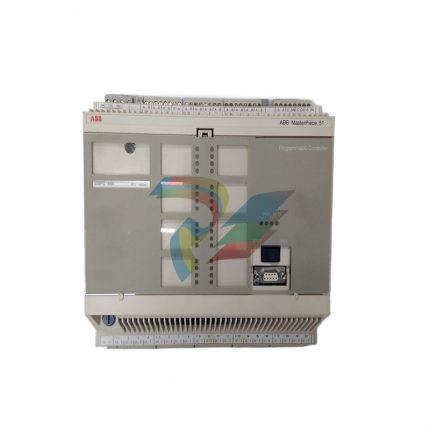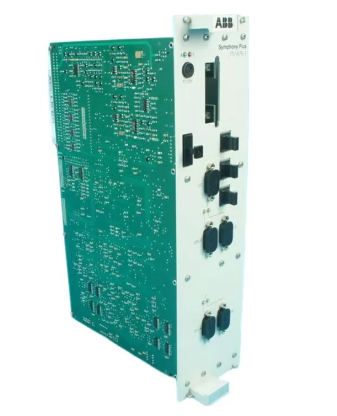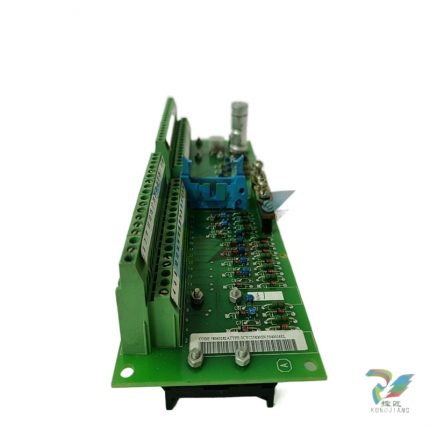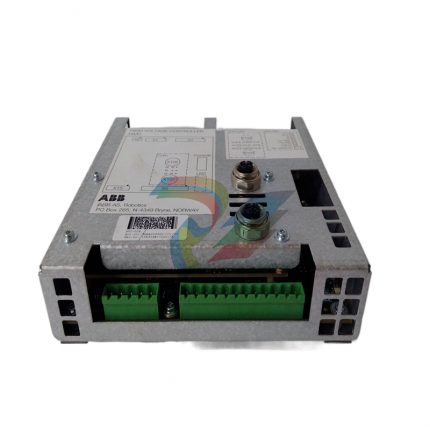“ABB 3BHE031065R0020 – Spare parts in stock” has been added to your cart. View cart

ABB 3HAB8101-18/09A servo drive
$7,374.00 Original price was: $7,374.00.$6,783.00Current price is: $6,783.00.个

ABB PPD117A3011 3BHE030410R3011 Excitation Controller Module
$6,848.00 Original price was: $6,848.00.$6,747.00Current price is: $6,747.00.个
ABB PM876-1 3BDH000707R1 Controller
$9,994.00 Original price was: $9,994.00.$9,574.00Current price is: $9,574.00.个
ABB PM876-1 (order number: 3BDH000707R1) is a high-performance central processing unit (CPU) controller for industrial automation, belonging to the core components of ABB AC 800M series distributed control systems (DCS). This controller, with strong computing power and flexible expansion characteristics as its core, undertakes key tasks such as industrial field data acquisition, logical operation, process control, equipment linkage, and communication coordination. Through precise execution of control strategies, it achieves stable management and control of complex industrial processes and is the core center for building large-scale distributed control systems.
Category: ABB
Tag: PM876-1 3BDH000707R1
Description
ABB PM876-1 3BDH000707R1 Controller
Product Overview
ABB PM876-1 (order number: 3BDH000707R1) is a high-performance central processing unit (CPU) controller for industrial automation, belonging to the core components of ABB AC 800M series distributed control systems (DCS). This controller, with strong computing power and flexible expansion characteristics as its core, undertakes key tasks such as industrial field data acquisition, logical operation, process control, equipment linkage, and communication coordination. Through precise execution of control strategies, it achieves stable management and control of complex industrial processes and is the core center for building large-scale distributed control systems.
It integrates ABB’s advanced chip technology and software algorithms in the field of industrial control, adopts modular design and redundant architecture (support), and has the characteristics of fast computing speed, high reliability, strong anti-interference ability, and wide compatibility. It is widely used in industries such as power, chemical, metallurgy, oil and gas, and papermaking that require strict control accuracy and system stability, providing solid control support for efficient, safe, and intelligent operation of industrial production.
Core functions and control features
1. Core control functions
-High speed data processing and computation: Equipped with a high-performance 32-bit microprocessor, the main frequency can reach several hundred megahertz, supporting multi task parallel processing, capable of processing thousands of analog and digital signals simultaneously, and executing complex control algorithms (such as PID, fuzzy control, predictive control, etc.) with response times in milliseconds, ensuring real-time and precise control of industrial processes.
-Flexible control strategy configuration: Supports graphical programming through ABB Control Builder M engineering software, compatible with various international standard programming methods such as Function Block Diagram (FBD), Ladder Diagram (LD), Structured Text (ST), etc. It can flexibly build customized control logic according to different industrial process requirements, adapting to various scenarios from simple start stop control to complex process linkage.
-Redundant backup and fault-tolerant control: Supports hot standby redundant configuration (with redundant modules). When the main controller experiences hardware failure or software abnormality, the backup controller can quickly switch without disturbance (switching time ≤ 10ms), ensuring uninterrupted control process and effectively improving the average time between failures (MTBF) of the system, meeting high reliability production requirements.
-Comprehensive process monitoring and diagnosis: equipped with comprehensive self diagnostic functions, it can monitor the hardware status of the controller itself (such as power supply, memory, communication interface) and the operation of connected I/O modules in real time. When a fault is detected, it can immediately issue an alarm signal and record the fault information; Simultaneously supporting real-time collection and monitoring of operating parameters of industrial field equipment, providing comprehensive process data support for operation and maintenance personnel.
2. Additional practical features
-Powerful communication expansion capability: Built in multiple high-speed communication interfaces, supporting mainstream industrial communication protocols such as Ethernet/IP, PROFINET, Modbus TCP, Profibus DP, etc. It can seamlessly integrate with on-site I/O modules, intelligent instruments, frequency converters, PLCs, and upper monitoring systems, achieving data interconnection and intercommunication between the control layer, equipment layer, and information layer.
-Large capacity storage and data management: Equipped with large capacity non-volatile memory, it can store massive control programs, historical operating data, fault records, and configuration parameters. It supports local caching and scheduled uploading of data, providing a data foundation for production process traceability, fault analysis, and optimization decision-making.
-Modular Expansion and Compatibility: Adopting a standardized module slot design, it can flexibly expand digital I/O, analog I/O, special function modules (such as pulse counting, high-speed output), etc. It is compatible with the entire series of AC 800M I/O modules, easily adapting to the expansion needs of control systems of different scales.
-Strong anti-interference and environmental adaptability: Following the IEC 61000 series electromagnetic compatibility standards, using anti-interference technologies such as electromagnetic shielding and optoelectronic isolation, it can effectively resist interference such as electromagnetic radiation, voltage fluctuations, and surge impacts in industrial sites; The core components adopt industrial grade high stability products, which can operate stably in a wide temperature and humidity environment.
Key technical parameters
Core processor
32-bit high-performance microprocessor with a clock frequency of ≥ 400MHz
Provide powerful data processing and computing capabilities to support the operation of complex control algorithms
Power parameters
Input voltage: 24V DC ± 20%; Power consumption: ≤ 15W
Suitable for commonly used industrial DC power supplies, with strong voltage adaptability and stable operation
storage capacity
Program memory: ≥ 8MB; Data memory: ≥ 16MB (expandable to 32MB)
Meet the requirements of large capacity control program storage and massive running data caching
I/O processing capability
Maximum supported I/O points: 4096 points (digital)+1024 points (analog); Scanning cycle: ≥ 1ms (1000 digital points)
Adapt to the I/O expansion requirements of medium and large industrial control systems, with strong real-time performance
communication interface
2 Gigabit Ethernet interfaces (supporting redundancy); 2-channel RS485 interface; 1-channel PROFINET interface
Support multi protocol communication and redundant backup to ensure stable and reliable data transmission
Control algorithm support
Support PID, cascade PID, fuzzy control, predictive control, logic interlocking control, etc
Adapt to the control requirements of different industrial processes, with high control accuracy
working environment
Temperature: -25 ℃~+70 ℃; Humidity: 5%~95% (no condensation); Protection level: IP20 (controller body)
Adapt to various installation environments such as industrial control rooms and control cabinets, with strong environmental adaptability
Installation method
35mm standard DIN rail installation (compatible with AC 800M series rack)
Complies with industrial standardization installation requirements, facilitating system integration and maintenance
Typical application scenarios
This controller, with its powerful computing power, flexible expansion characteristics, and high reliability, plays a core role in various complex industrial control scenarios. Typical applications include:
1. Power industry: used for core systems such as boiler control, steam turbine control, and generator control in thermal power plants and hydropower plants, to achieve precise control of combustion processes, steam parameters, and power generation efficiency, and to ensure continuous and stable power production through redundant configuration.
2. Petrochemical industry: In control systems such as refining equipment, chemical reaction vessels, and oil and gas pipelines, closed-loop control of key parameters such as temperature, pressure, flow rate, and liquid level is implemented, as well as complex interlocking protection logic, to ensure the safety and efficiency of chemical production.
3. Metallurgical industry: used for controlling blast furnace ironmaking, converter steelmaking, and steel rolling production lines in steel plants, achieving real-time adjustment of smelting temperature, rolling speed, tension and other parameters, and improving the quality and production efficiency of steel products.
4. Paper and textile industry: In the production control system of paper and textile machines, precise control of process parameters such as paper thickness, moisture, and textile fabric tension is achieved, while coordinating the coordinated operation of multiple devices to ensure the stability of the production process.
5. Municipal and Environmental Protection Industry: Used for aeration control, water quality monitoring, sludge treatment systems in sewage treatment plants, as well as dosing control and water supply pressure regulation in water plants, achieving environmental standards and efficient resource utilization through precise control.
Installation and maintenance precautions
1. Installation specifications
-The controller should be installed in a well ventilated, non violent vibration, non corrosive gas, and non strong electromagnetic radiation control room or standard cabinet, avoiding direct sunlight and rainwater immersion. The cabinet should be equipped with a cooling fan or air conditioner to ensure that the ambient temperature is within the working range of the product.
-Strictly follow the installation manual of the AC 800M series system for wiring, distinguish between the power circuit, communication circuit, and I/O module connection circuit, separate the wiring of strong and weak current circuits, and maintain a safe distance (recommended ≥ 150mm) to avoid electromagnetic interference affecting the operation of the controller.
-The connection between the controller, I/O module, and power module needs to be achieved through a dedicated backplane bus to ensure that the modules are securely installed and the bus contacts are good; Communication cables should use shielded twisted pair cables or optical fibers, and the shielding layer should be reliably grounded at one end to reduce signal transmission interference.
-The grounding of the controller should comply with the industrial control grounding specifications, using an independent grounding method with a grounding resistance of ≤ 4 Ω to ensure reliable grounding in case of faults, enhance the system’s anti-interference ability, and improve the personal safety of operators.
2. Maintenance points
-During daily inspections, check the operation status of the controller (such as power supply, communication, redundancy status) through the upper monitoring system or controller panel indicator lights to ensure that there are no abnormal alarms; Regularly check parameters such as CPU load and memory usage to avoid control delays caused by resource overload.
-Clean and maintain the controller and cabinet once a quarter, using compressed air or dry soft cloth to clean the dust on the cabinet filter, controller surface, and module interface, ensuring good heat dissipation and avoiding dust accumulation that may cause equipment overheating.
-Regularly backup the control program, it is recommended to backup the latest program and configuration parameters once a week, and store them in a separate secure device to prevent program loss due to controller failure; At the same time, regularly check the program version and running parameters to ensure consistency with production requirements.
-Perform functional testing on the controller every six months to one year, including redundant switching testing, communication link testing, control logic verification testing, etc., simulate fault scenarios to verify the reliability of redundant switching and the accuracy of control actions, and promptly identify and eliminate potential problems.
-When the controller fails, the control task should be immediately switched to the backup controller (if configured) through redundant switching, and ABB official technical personnel or professional operation and maintenance personnel should be contacted for fault diagnosis and maintenance. Non professionals are prohibited from disassembling the controller or modifying the core program on their own.

Additional information
| Weight | 2.47 lbs |
|---|---|
| Dimensions | 764 × 657 × 552 in |
Reviews (0)
Be the first to review “ABB PM876-1 3BDH000707R1 Controller” Cancel reply
Shipping and Delivery


MAECENAS IACULIS
Vestibulum curae torquent diam diam commodo parturient penatibus nunc dui adipiscing convallis bulum parturient suspendisse parturient a.Parturient in parturient scelerisque nibh lectus quam a natoque adipiscing a vestibulum hendrerit et pharetra fames nunc natoque dui.
ADIPISCING CONVALLIS BULUM
- Vestibulum penatibus nunc dui adipiscing convallis bulum parturient suspendisse.
- Abitur parturient praesent lectus quam a natoque adipiscing a vestibulum hendre.
- Diam parturient dictumst parturient scelerisque nibh lectus.
Scelerisque adipiscing bibendum sem vestibulum et in a a a purus lectus faucibus lobortis tincidunt purus lectus nisl class eros.Condimentum a et ullamcorper dictumst mus et tristique elementum nam inceptos hac parturient scelerisque vestibulum amet elit ut volutpat.










Reviews
There are no reviews yet.